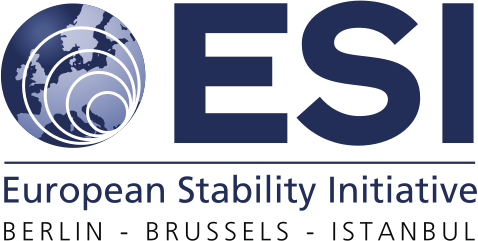New ESI report - Cutting Kosovo's Lifeline
Dear friends of ESI,
What is the new era into which Kosovo is currently moving? Ask any diplomat or international official, journalist or analyst, and the answer is likely to be the same: Kosovo is moving into a post-status era.
However, current policy debates in Kosovo which focus almost exclusively on status fail to take into account another change that is already affecting Kosovo society profoundly: the end of the era of mass migration. This newest ESI report - Cutting the lifeline. Migration, Families and the Future of Kosovo - argues that migration needs to be at the centre of current debates on Kosovo's future.
For generations, work migration has provided a lifeline for Kosovo. Since 1999, over a hundred thousand people have been forced to return from the diaspora. The emigration route has been largely closed off. Remittances have fallen significantly from their post-war high. The lifeline that kept Kosovo afloat for the past generation is being cut.
This is happening at the very moment when millions of Romanians, Bulgarians, Latvians or Poles are finding employment in different parts of the European Union. It is incoherent for European states to invest hundreds of millions of euros in the stabilisation of Kosovo, and at the same time to slam the door abruptly on any further migration. The report calls on the European Union to identify ways in which rural Kosovars can find temporary work abroad.
However, the report also contains uncomfortable messages for Kosovo's own policy makers. Kosovo urgently needs continued migration to maintain social stability. However, a society that resolves its labour surplus problems solely through migration, as Kosovo has done for decades, reverts to instability once the safety valve of migration is shut off.
Migration and remittances have been a lifeline, but they have not brought about genuine development. They have helped maintain the status quo. In doing so, they have preserved one of Europe's oldest and most conservative institutions: the patriarchal Balkan family.
The traditional, multi-family household, once common across the former Yugoslavia, has helped protect Kosovo Albanians in the face of weak or hostile state institutions. It also contributed to the lowest rates of female employment in Europe, serious underinvestment in education and a general lack of innovation and entrepreneurship.
Kosovo famously has Europe’s largest households. This report looks at how they function in two concrete villages. The average household in the village of Cerrce has 6.6 members. The average household in the village of Lubishte has 9.5 members. The largest household in Cerrce is 24 persons living in one large house. The largest household in Lubishte has 32 members.
Kosovo therefore also needs a social and institutional revolution in its countryside. The starting point for this has to be a reflection on patriarchal family structures and on the status of rural women.
We are hoping that this report, which challenges some conventional wisdoms about contemporary Kosovo, will provoke a wider debate. As always we are looking forward to any feedback.
Best wishes,

Gerald Knaus
